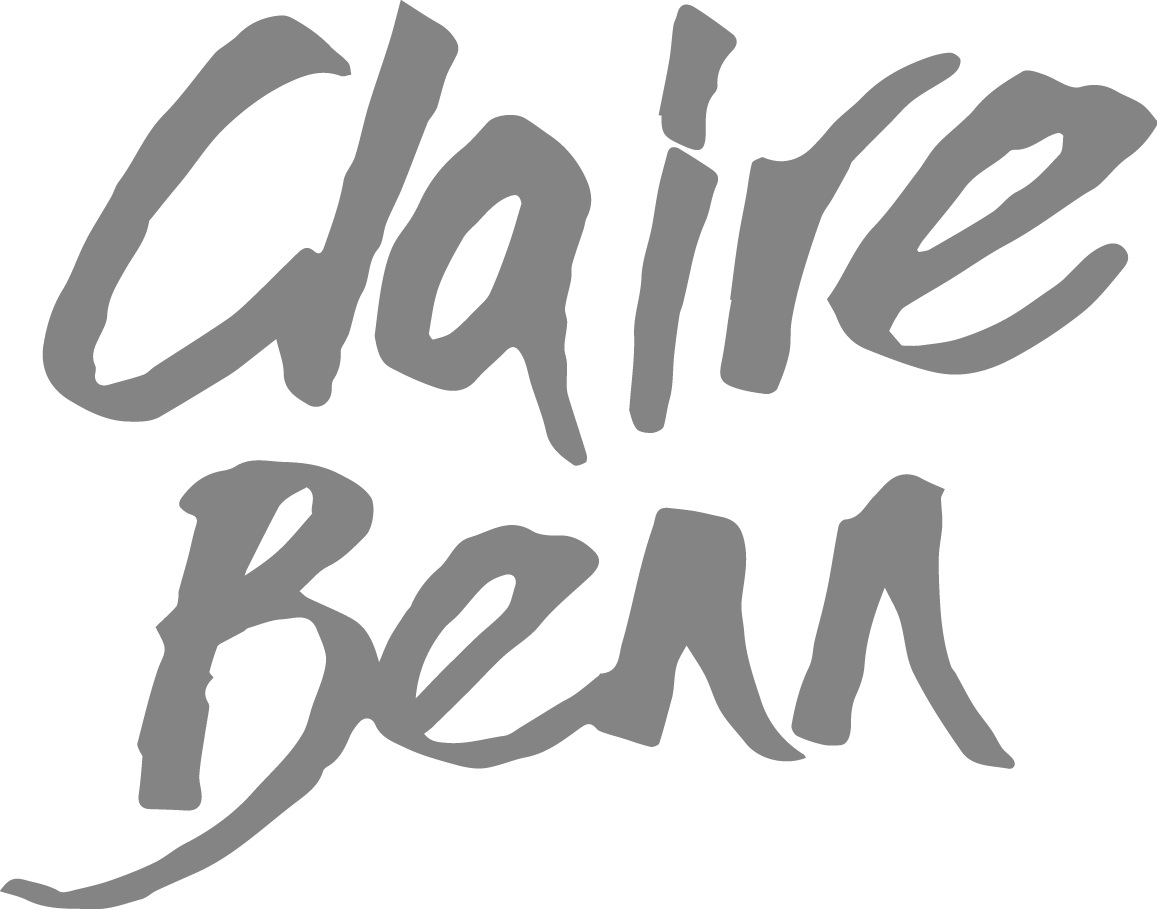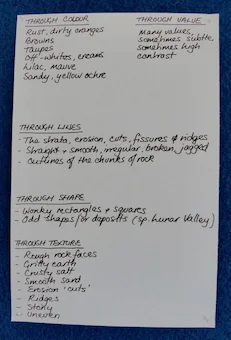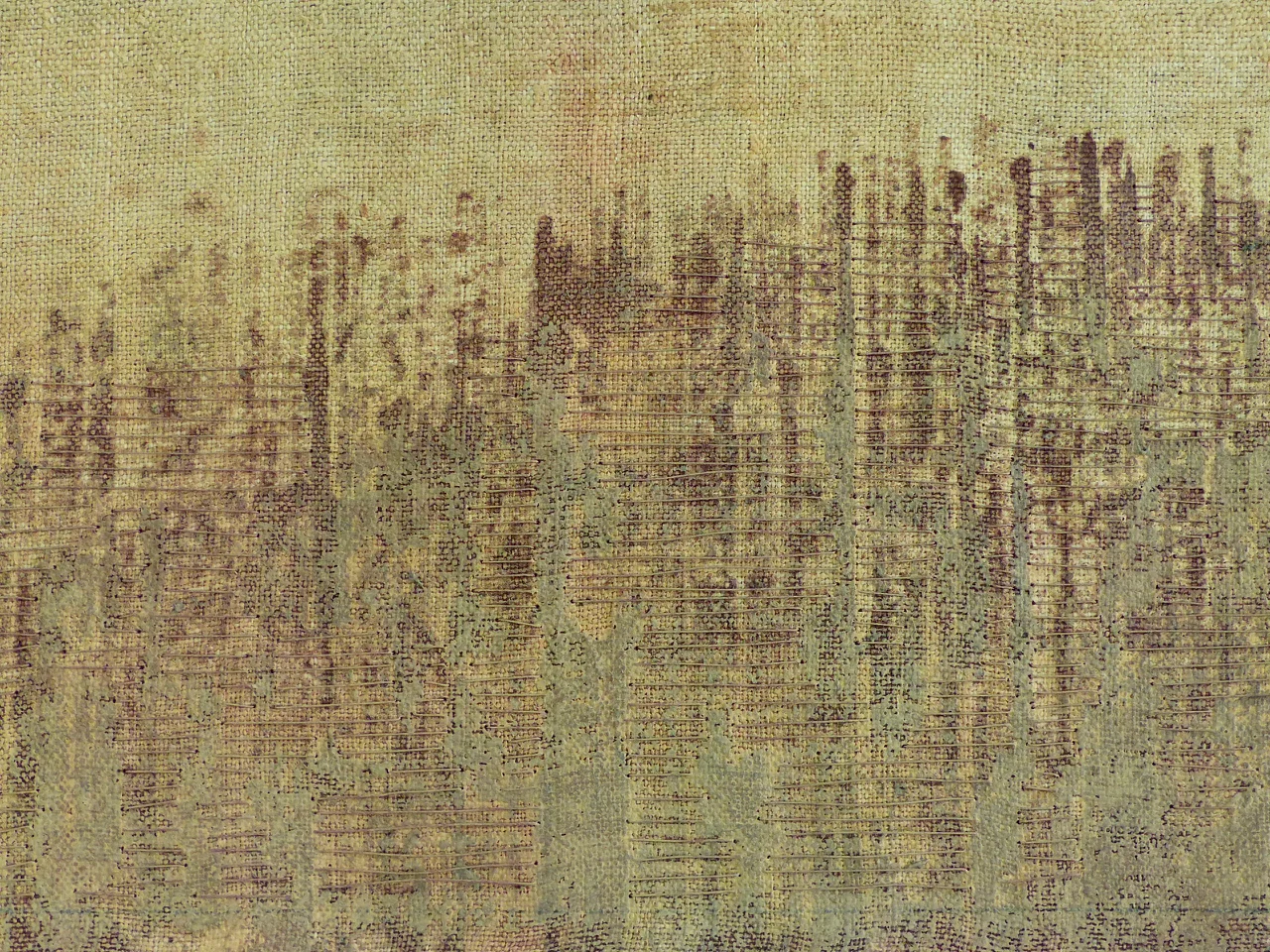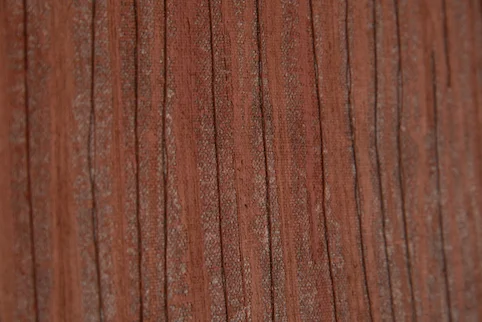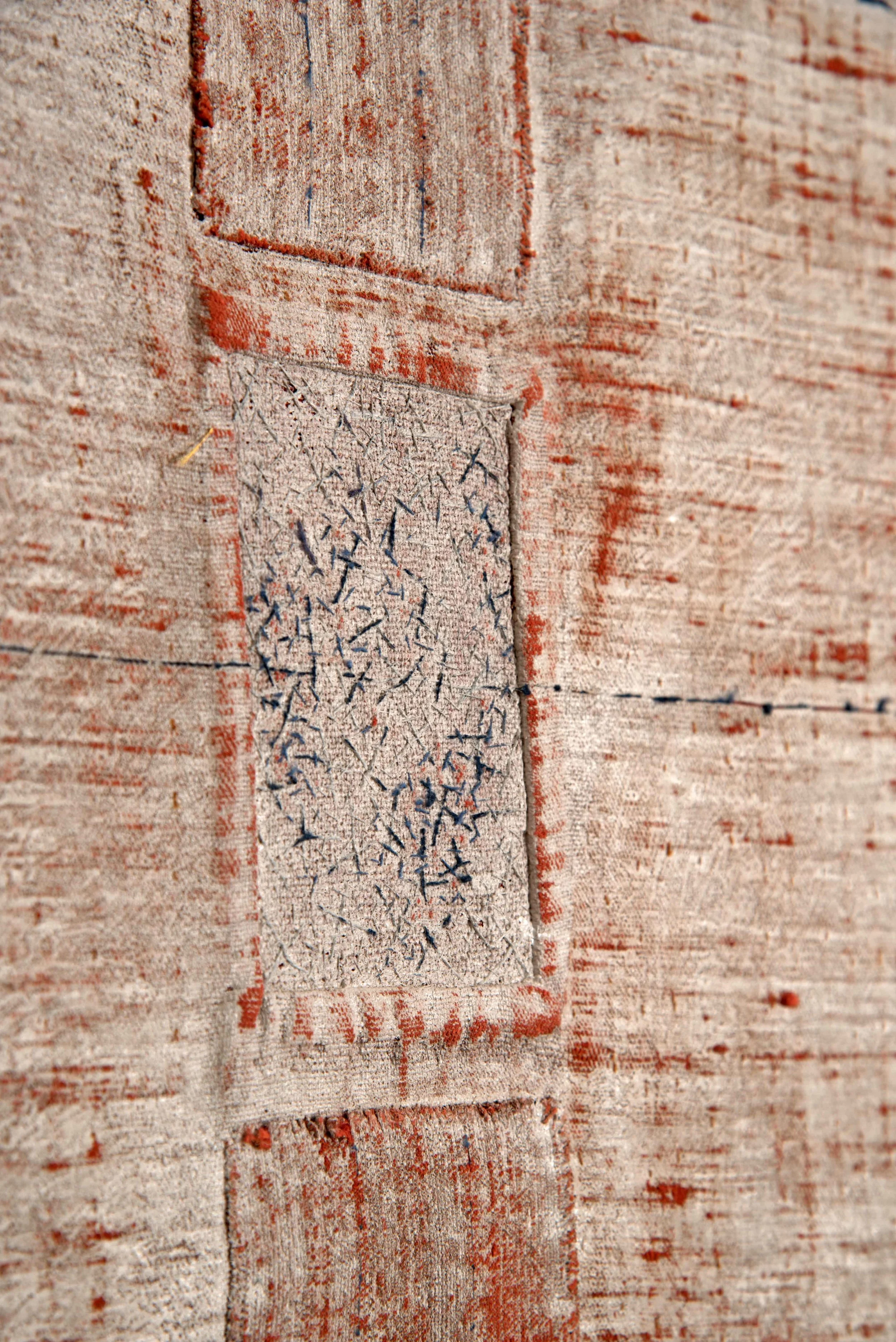Inside Atacama
An extraordinarily varied and multi-layered landscape full of texture, line, shape and colour; bright, brilliant and deep rust oranges, yellow ochre, sand, buff, pale mauve and due to the high salt content of the earth, white. This is the Atacama Desert, visited in 2017. The place has an ancient feel, a sense of the ground being somehow sacred. Vast and humbling. Fissured, eroded, shifted, crumbling, rough, smooth and multi-dimensional.
It takes me a while to get going on a new body of work. I find I need time to just mull it all over by re-visiting the place; examining my photographs (mainly for colour and texture reference) and (very) rough sketches, re-reading my jottings, adding to those jottings and generally just pondering. I’ll often start by asking myself a simple question; “what am I trying to achieve with this new body of work?”
As I’ve now been working with landscape as my inspiration for about six years, that question has got easier to answer and the short version is “to visually express a sense of place through abstract representation”. But that’s a pretty broad statement, so with each new landscape I have to get very specific about what I’ve seen and experienced. That’s the bit that takes time as places like the Atacama can be rather overwhelming in terms of what they offer.
I then have to start and it’s often by choosing a single colour or colour scheme, such as the soft colours of the high plateau above Death Valley:
The High Plateau
I‘ll think about process in terms of what’s going to achieve the result I’m looking for and add ‘what ifs’ to that list in terms of how a process might be adapted for a different outcome.
I then make a start on several ‘backgrounds’ so I have options as to ways forward. There’s usually a couple that immediately call out to me so contemplation is the next step, and I’ve learned that no matter how keen I am to push on, time spent looking is time that yields better results. I’m not sure where my brain goes when I spend time looking. I find that if I’m focused and still, space is created for ‘progression’ ideas to arrive. I liken it to still water where things are able to float to the surface. From time to time I’ll scribble my thoughts down and when no more come, I take a break and come back and re-examine them. Decisions are taken and the next move made.
Detail of ‘Plateau’; my interpretation of place (image by Katie Vandyck)
When I started working with landscape as my inspiration, I switched from using acrylic paints to earth pigments bound in a mix of acrylic medium and water. They provide me with a direct connection back to the land and I often bring ‘dirt’ back from my travels and use it in conjunction with purchased earth pigments.
I have to confess I don’t do a lot of sampling as I find I need to work more or less to finished size to understand how things will look, and to get placement and proportion working to achieve the right balance. I do undertake ‘explorations’ to test out specific processes and many get resolved into smaller pieces that I call ‘slivers’.
Here’s a detail of a ‘sliver’ which involved rubbing chunks of earth pigment directly into the cloth (in this case, old linen). The loose pigment was then sealed with mixture of fluid matte medium and water. With this approach, the back of the piece yields the result I’m seeking as the pigment seeps through the cloth in an uncontrollable, organic fashion. I followed up with mono print, hand stitched with machine thread and finished with a light dusting of yet more pigment.
Working small allows me to test wet processes and hand stitch as I can tackle them fairly quickly. They’re also useful to have around as they’re portable, so I can stitch them anyplace and almost any time.
All of my slivers will measure 65cm wide by 18cm tall and be tray-framed. Here are two more.
My preferred cloth is either cotton canvas, linen or old hemp – the choice is decided by my starting point although all are easy to hand stitch before the application of the pigment and medium, but not so after! I begin by laying down a background through a form of mono printing using very liquid media, sometimes in a single colour, sometimes with several. Subtle texture and the beginnings of the composition can also be achieved at this point. These backgrounds are then contemplated before further layers are added.
Working on ‘Slide’. Another piece is in progress on the bench behind me (image by Sinéad Smith)
In ‘Slide’, I used dangling threads to ‘guide’ the dribbled paint and removed them once the paint had dried. I went on to couch threads back in to the work before adding more paint to embed them in to the surface, and to bring the horizon line down. The next image shows a detail of the finished work, and the colour difference between this and the ‘in progress’ shot by Sinéad is strong sunlight shining in to the studio!
‘Slide’, detail (image by Katie Vandyck)
Thread and hand stitch – before, during and after wet processes – are important in terms of adding literal surface texture. Thread is also great as a resist and when pulled off after the paint has dried, leaves marks that vary in terms of how it’s been arranged. I have a wonderful tangle of painted threads from one piece of work (‘Permeate’, see below) that I’ve used on another work.
Detail of “Permeate’ showing the resist lines of the thread.
‘Salar’ (detail) showing the painted threads used to resist the lines on ‘Permeate’
Hand stitching through pigment and acrylic is a bit of a penance but is worthwhile and I find that more and more, I add paint on top of stitch to integrate it more fully in to the work.
‘HaCI’ (the chemical formula for rock salt) showing detail of painted hand stitch (image Katie Vandyck)
I’ve also started to use an electric sander to ‘erode’ the surface in order to mimic weathering. It’s pretty scary to scrape paint across something that may have taken a solid month to hand stitch – even scarier to then go at it with the sander but so far, I’m happy and have avoided any disasters! The following two details are of ‘Alto Atacama’, based on the modern adobe structure of our hotel.
'Alto Atacama', detail. (Image by Katie Vandyck)
'Alto Atacama', detail (image by Katie Vandyck)
I’ve only shown close-ups in this essay as my plan is to complete around 20 pieces and then go for a solo show.., and I don’t want to reveal the actual works until that happens. So far I’ve completed six large’ish pieces and have four close to being finished; it’s going to be at least another 12 to 18 months before I reach my goal.
‘Fissure’, detail (image by Katie Vandyck)
‘Red Rock, River & Rain’, detail (image by Katie Vandyck)
Not sure what I’ll be discussing next month, but it’ll come to me! Enjoy the coming of summer – I’m relishing the longer days and warmer temperatures which are giving me the chance to continue working on the Atacama series with my studio doors flung open.
The salt pan (salar) of the Atacama, south of San Pedro de Atacama
A huge storm coming across from the Andes; the inspiration for Red Rock, River & Rain’.
We travelled to the Atacama through Mira Viva ( www.miravivatravel.com ) who did a brilliant job in recommending the Alto Atacama Hotel, a beautiful place nestled sensitively in to the landscape. The staff and guides were superb (all from Chile) and coped brilliantly with the somewhat unusual weather; brilliant sunshine until lunchtime, then fluffy clouds followed by a magnificent black sky at between 3-4pm. The rain storms were dramatic and caused a lot of local damage; the river rose and burst its banks causing the road to Alto to be washed away; the hotel lobby almost flooded; families in local homes were evacuated due to flooding and landslides caused road closures - none of which stopped us from having a fantastic time! In fact, the chance to see the Atacama in varying light conditions was a benefit to me as an artist.., and it’s why there are more references to water and rain than might be expected from a body of work based on a desert landscape!
Lunar Valley; a salt encrusted visual feast.
